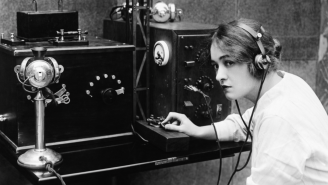Telegrams were the first instant messages, allowing people to send short notes rapidly over long distances. Telegraphy was developed in the 19th century and tweets were created about 150 years later, but despite the vast time difference, they were received and critiqued in strikingly similar ways.
Some early reactions to telegrams included one 1858 commentary in The New York Times calling them “superficial, sudden, unsifted” and likely to “render the popular mind too fast for the truth.” The exact same criticisms have been leveled at social media today. In both cases, the short, character-constrained nature of the messages was seen as a problem, leading to a lack of depth and context.

Questions were raised about the inherent value of instant, short communication. “Ten days bring us the mails from Europe. What need is there for the scraps of news in ten minutes?” asked one writer, going on to ask, “How will its uses add to the happiness of mankind?… Has it banished any evil, mitigated any sorrow?” The writer then implied that it could increase suffering by informing relatives of deceased relatives sooner.
The seeming frivolity of Twitter got similar treatment in the early 2000s, a common joke being that it was only good for telling people what you had for breakfast. Yet, in both cases, it eventually became clear that instant, short communication was an important evolution in human communication.
Like social media, telegrams also faced issues with trolling and the spread of misinformation. Referred to as “malicious additions” in the article below, the telegram was blamed for spreading unverified news and causing tensions between the British and Americans.

Kids these days
Some young people were particularly enthusiastic users of telegrams, just as they are today with social media. In both cases, the desire to communicate and socialize drove adoption among the youth, leading to concerns about overuse from older generations.

For example, a report from Wellesley College in the 19th century described students sending and receiving a daily average of 116 incoming and 175 outgoing telegrams as an “addiction.” Today, nothing has changed. Concerns over social media “addiction” remain rampant.
Censorship and impersonation
Telegrams also had an impact on warfare with their ability to provide real-time updates. Naturally, governments often tried to censor any communication deemed undesirable. The first example of this occurred in 1863, when it was reported that authorities in Ukraine and Russia decided not to permit the passage over their telegram lines of any news unfavorable to Russia, particularly regarding Russia’s military efforts.

Impersonation and propaganda were also a problem, especially without a formal way of verifying a sender. Most notably, during the 1918 Spanish Flu pandemic, the “anti-maskers” of the day sent telegrams purporting to be from the Surgeon General of the U.S. Army, advising people not to wear masks. It would later emerge the telegram was fake, but not before it made headlines. Of course, similar things happened on Twitter during the recent COVID pandemic.
Telegrams will destroy Earth
The hyperboles kept going. The advent of transatlantic telegraph wires was accompanied by theories that they could lead to the end of the world. A prediction was made that the wires straddling the Earth would disrupt the planet’s magnetic poles, change the position of Earth’s axis, and lead to tropical forests in Central Park and a deep freeze in Africa. Ultimately, this would result in complete chaos in the Solar System, along with a “series of frightful collisions” among the planets.
The sudden ability to communicate instantly over long distances feels like an extremely disruptive force. Yet, these identical concerns were voiced over 150 years ago with the invention of the telegram, which went on to become a crucial part of communication and information sharing. The same is true of social media today.
This excerpt was reprinted with permission of Big Think, where it was originally published.






